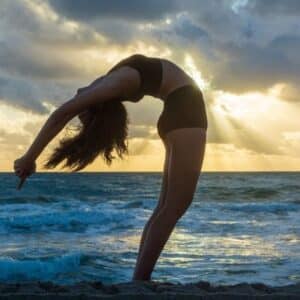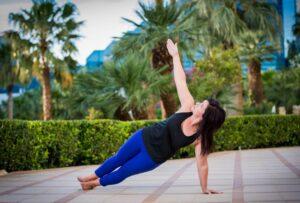Grace Stephen
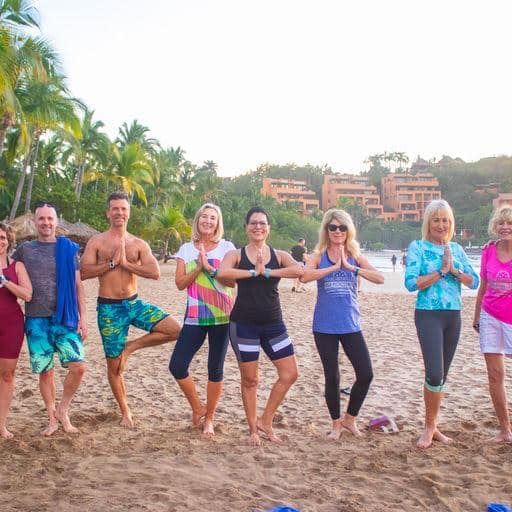
Long-Form Wellness Interview Series with Yoga Instructor Grace Stephen.
Actionable insights and practical advice for your life, health, and business.
In this interview:
- Fundamentals of movement
- Competitive in-line skating
- Injury prevention and recovery, including Grace's journey back from a life-threatening car accident
- Qi Gong, China, alternative medicine
- Energy flow, life rhythm and balance
- Breathwork, awareness, surrender
- Entrepreneurial mindset, growing your small business
Grace Stephen, a Professional Yoga Therapist and Qi Gong Instructor, is also a Doctor of Chiropractic Medicine and the lead instructor at Yovana Yoga 200-Hour Yoga Teacher Training.
Grace’s unique teaching is a blend of her training in the United States and abroad. She personally understands the power of mind-body practices; specifically, Qi Gong and yoga, and is inspired to teach others about their innate ability to heal. After a debilitating automobile accident and a previous diagnosis of cancer, these practices helped her regain physical health and peace of mind.
Grace has learned to share the benefits of Qi Gong and Yoga with everybody. Her lists of students have included children, adults, and professional and non-professional athletes. Prior to becoming a mind-body instructor, Grace had a long successful career in the medical field. She has spent most of her career working with people of various abilities and health concerns.
When not teaching, Grace enjoys cycling, hiking, trail running, SUP, and loving on her three rescue fur babies. She teaches group classes and maintains a private practice in Kennesaw, GA.
-
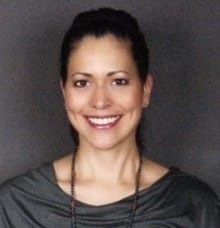
Grace Stephen
Fundamentals of Movement; In-Line Skating; Grace's Car Accident
Anthony Mandela (AM): Thanks so much, Grace, for taking the time to chat today. I’m very excited to dive into this conversation! I thought I’d start by asking about your connection with the instructor you will be co-leading with in Costa Rica this summer. You’ve known Jana Rife for a while now; how did you meet?
Grace Stephen (GS): I saw an advertisement for stand up paddleboarding and, since I like to try new things at least once, decided to go out for a class. The class happened to be Jana’s and it was her last of the season. She was such a phenomenal teacher, and I had such a great time, that I knew I had to share the experience with other people. At the end of the class, I asked if she could do one more class—I told her I would gather a bunch of my friends together and she agreed to do a private class for us. We all got hooked and started taking as many classes as we could with her.
Not long after, I ended up at one of her Florida retreats, so she has also been my teacher and retreat leader. It’s been a fun relationship because often yoga teachers don’t get enough time to just be students. We’re usually instructing the classes or leading the retreats and workshops. I love being the student in any of her classes.
Jana’s got great balance as an instructor. She’s a professional and leads with a plan, but also has the perfect measure of flexibility. She’s so personable, an involved part of the group, but steps back at the right times and allows the group to bond, creating space for people to do their own thing at their own pace if they want.
AM: I agree! I’ve taken some of Jana’s yoga SUP classes, she’s a fantastic instructor with an amazing ability to break down the fundamentals on the board; her classes are accessible to all and perfect for students of every ability level. She’s also a lot of fun to work with and has a great following of wonderful people.
GS: I think her ability to take a complicated movement or pose and break down the fundamentals in a clear, easy-to-follow manner is one of her gifts. In addition to teaching yoga, I’ve taught competitive in-line skating and trained marathoners, so I really focus on breaking things down to the fundamentals, teaching techniques that people feel comfortable practicing and building upon. It’s so important. The process that Jana uses on the board mirrors the approach I use to teach competitive in-line skating—for example, teaching proper movements and safety on land, from a stationary perspective, before adding in the board (or skates).
AM: Fascinating. I think you are the first yoga instructor I’ve ever spoken to who also has a background in competitive in-line skating. Please tell me more.
GS: In Atlanta, we have one of the largest and longest in-line skating events in the country where the halfway point is approximately 38 miles. I met up with a couple people, dedicated skaters, who eventually became my coaches and trained me for the event. It didn’t take long before I was hooked. I continued on to receive my teaching certification. Interestingly, I found myself working with clients who were skiers and wanted to do something in the summer for good cross-training (the leg movement for in-line skating is similar to skiing and you can also use poles). I trained a variety of people who had different interests and ability levels. Skating is all around great exercise, and a lot of fun!
AM: And what sparked your personal interest in the sport and competition?
GS: Well, I really believe in not always doing the same movement. It’s important to change up your training routine. Move as many different ways as you can. For me, skating was a very different movement from yoga that worked different muscles. I’m a cyclist, and cycling requires a lot of forward/backward movement, whereas skating is very side to side. In general, I’m always looking at a holistic approach to movement.
The sport offers many different ways to compete and have fun, from 5K races all the way up to 90+ miles. I’m an endurance athlete, and my body doesn’t really seem to kick in until after 20 miles, so I didn’t like the 10Ks and shorter races all that much, but loved any race that was 26.2 miles and up.
AM: Tell me a little bit about your current teaching practice. What do your classes incorporate and how do you draw from your background as you instruct?
GS: Although I’m not practicing now, I was a chiropractor, and also did work in the orthopedic trauma and pharmaceutical world, so I have a biomechanical background and look at my students through that lens. My background helps me with all clients and students, but especially those with any kind of injury; I know the medical language and how to keep them safe. My classes are really a mix—I have the full range of ages represented—and I give lots of options and modifications for the different groups. I want my students to challenge themselves but also stay safe.
AM: Indeed, you have a very unique background. An especially helpful component, I would think, is the alignment and trauma expertise you have. How long have you been practicing yoga?
GS: I started when I was 5. Even though I was an outdoor kid, I happened to find this lady on TV that I would watch and try my best to participate in her classes. I had the interest at a young age and renewed it again in college. I had a bad injury which changed my practice from vinyasa flow-based to more of an alignment focus. Because of my multiple injuries, I realized I couldn’t do sun salutations. Through a yoga therapist who was Iyengar based—her teacher trained with Mr. Iyengar in India—l was able to strengthen my body and get my life back. I used every limb of yoga, everything was necessary, to heal and eventually get to the outcome of where I could teach other people.
"No matter where you are, at your weakest or strongest point, yoga is going to meet you where you’re at. The mat doesn’t judge."
AM: What would you say to someone interested in trying out yoga for the first time. Why should they give it a shot?
GS: There are some big myths out there that I hear a lot. People think they need to lose weight first. Or they believe they are not flexible enough…they are waiting to attain something before coming to class. I always tell people that even though I’ve been a strong athlete, and have trained former pro players, I’ve also had a completely broken body, so I know that no matter where you are, at your weakest or strongest point, yoga is going to meet you where you’re at. The mat doesn’t judge.
Encouraging the first step onto the mat is the most important, and so that is what I try to do. And I also do my best to help people feel safe and understand they will be fully supported in my classes. I take good care of my students.
AM: How do you do that? Make someone feel comfortable and safe in one of your classes?
GS: Well, humor is important. I do think many times people take themselves way too seriously, so I like to add some lighthearted moments and laughter to my classes. Also, I take the time to get to know my students, learning what they might be going through before they get on the mat helps me gather information ahead of time that I use to create my classes and better cater to their needs. This might be through props I use, it could be through telling them ahead of time about a certain pose and demonstrating what it should look like. I want my students to see that class is not about contorting yourself into a certain posture, but rather about honoring the body.
"Yoga brought me back to my rhythm. That’s one of the things I love to teach people—we can be so stressed, caught up in the craziness of life, but we can still maintain our rhythm, a healthy rhythm."
AM: You mentioned you’ve had some serious injuries. How did yoga help you recover and/or how have you seen yoga help others with injuries?
GS: I was an ultrarunner/trail runner and was training, doing some cycling, to prepare for a mountain marathon when I got into a serious car accident. Someone ran a red light and smashed into me. I had to have spinal surgery. I had a partial tear in my Achilles tendon, injured my neck, dislocated my clavicle…multiple injuries. I was stuck in the house for quite some time. As an endurance athlete, I was really missing the runner’s high and started experimenting more with the breathing limb of yoga; I realized that the pranayama limb of yoga was significantly helping me modulate my pain—I could change how I was feeling in my body just by breathing differently. Anxiety, depression, pain management, all through breathing practices.
Everything I took on the mat as a healthy athlete, and now with my injuries, I was trying to find how to bring that back within the new framework I was living. After a certain point, I knew I wanted to get back into yoga, but knew I wouldn’t be able to do the vinyasa flow. Someone told me about a yoga therapist I needed to see for help with this. I attended some of these new classes and the instructor/therapist I met, Sue, said that every day you come to the mat your body is different. Your mind could be different. Your breathing could be different. Just come with a beginner’s mind. Don’t say, today’s practice was “bad” or yesterday’s practice was “good”. Don’t judge yourself on the mat, just come as you are.
I started learning so much more about props since the instructor used all kinds of different techniques and props to support my body. We met my body where it was at so I started getting more opening, more strength. Then I was able to move a cushion and didn’t need so many blankets. Little by little I started moving better. One day I was walking and knew something was different, but I didn’t know how to explain exactly what I got back, I just felt different, better. I called one of my mentors, Matthew Sanford—he’s the person who taught me to teach people with various levels of ability—and told him I had been taking classes and tried to communicate how I felt different when I was walking. He told me something I remember vividly to this day: he told me I got my rhythm back.
This is one of the reasons why I like to incorporate as least some flow into all of my classes. I think, especially when we get stressed, our body gets out of its rhythm. That rhythm could be as simple as how you move your arms while you are walking. It could be how you breathe when you are stressed vs. not stressed. How your thinking could be stagnant. All of life is rhythm. And I found that yoga brought me back to my rhythm. That’s one of the things I love to teach people—we can be so stressed, caught up in the craziness of life, but we can still maintain our rhythm, a healthy rhythm.
Power of the breath; Yoga therapy; Injury prevention
AM: Great advice. When I’m chatting with instructors, the importance of the breath usually comes up at some point in the conversation. Even though I hear about the importance of the breath so often, I rarely find myself thinking much about the power of the breath. What do you believe is so important about the breath? Why should we care?
GS: Well, breath is life, right? We begin with the breath, and we end with it. Everything we do on this short time on earth is either breathing in a healthy way—promoting life—or not. When we promote life we breathe normally and keep our systems healthy. When we breathe properly we exhale and reduce our carbon dioxide load, creating a more neutral environment instead of an acidic environment. We are affecting every system of our body.
When we breathe shallowly, we are telling our nervous system we are stressed which keeps us in fight or flight mode. We are never just in fight or flight or just rest and digest; we’re always modulating on a spectrum between those two states. Unless you need to run or handle an emergency situation, you shouldn’t be in fight or flight. On a daily basis, or sometimes even minute-to-minute, if we check in with our breath and think about how and where we are breathing—for example, deepening the breath and bringing it down from the chest into the belly—we can literally change our chemistry and our nervous system, bringing our body into a more relaxed state which produces feel-good chemicals and reduces the stress-related chemical cortisol. All of our systems are maintained in a healthier way simply by breathing properly.
"Breath is multi-directional. It’s up and down and in and out and side to side and on the diagonal."
AM: Do you have any tips or tricks for how to breathe properly? Where do you start?
GS: I like to start with having my students explore their own breath. How are you breathing? Where are you breathing? In each moment, with the breath that you have, how does it make you feel? They might feel anxious, they might feel relaxed. Then I ask them to notice where it is. I like to have my students explore what is going on with them.
From there I might have them check out what is going on in their belly by having them place a hand over their stomach while breathing, or utilize a yoga strap around the ribcage because breathing is not just from the belly; with each deep breath there is an expansion of the rib cage. I like to say the ribs smile. Many will have a realization that they rarely ever breathe deep into the rib cage. I use some of these different props sometimes to help people get a better sense that the breath is multi-directional. It’s up and down and in and out and side to side and on the diagonal.
AM: Thanks so much for the helpful tips. You mentioned one of your mentors earlier and I’m wondering if you could speak a little bit more about those who have most influenced your teaching.
GS: I’ve had many people influence my yoga practice over the years, my teacher Matthew Sanford whom I mentioned earlier—he’s been a wheelchair user since the age of 13—was one of the best teachers I’ve ever had. He intimately understands the mind-body connection. He taught me that the Asana, the posture, can potentially discriminate but the principles of yoga and the principles of movement do not. He taught me how to extract yoga principles to suit everybody. This was a huge eye-opening experience for me, especially as I was recovering from injury. I never thought I would be able to do yoga again after my accident.
AM: Is Matthew Sanford still teaching?
GS: Yes, he’s based out of Minnesota and you can find him at: https://www.matthewsanford.com/. He is truly an amazing person and incredible teacher.
GS: I’ve always believed in practicing what you preach and in studying your craft. My craft is quite broad, and there are so many wonderful and ancient texts that have incredible wisdom, wisdom that is appropriate for every decade of our lives. Recently I’ve been devoting time to learning about the ancient Vedic texts. Yoga consists of eight limbs—it’s not only postures—so I’ve been learning and studying with the spiritual guide Swamini Shraddhananda Saraswati (SwaminiJi) who is the primary spiritual teacher at the Kula Kamala Foundation in Philadelphia. She studied in India for many years and has been such a wonderful guide. Many of the same challenges we face today were written about in these ancient texts, thousands of years ago! I find the more I learn about these texts, the deeper I grow in my yoga practice and the better I become as a yoga therapist.
"We create programs that addresses the mind, body, and spirit connection."
AM: Could you describe what it means to be a yoga therapist?
GS: In the yoga credentialing world, there are many different niches and training hour certifications. You can complete the 200-hour and/or 500-hour certifications and from there you could do additional training to become a certified yoga therapist. The additional training is substantial and can take and a couple of years to complete. It’s centered around looking at the body holistically. You learn about Ayurveda, the sister science of yoga, how to take care of your skin, how to eat seasonally. Many different things that promote health.
If someone comes to me with an injury, we do not just utilize yoga postures, we look at the injury holistically—so, in addition to the yoga movements, I would also give breathing practices and find a meditation program that works for them. We would create a program that addresses the mind, body, and spirit connection.
AM: Could you tell me a little more about your private practice and where you find yourself dedicating your time these days?
GS: I do quite a bit. I take private clients, and because of my specialty training an background, I frequently work with people who have spinal cord injuries, multiple sclerosis, cerebral palsy, etc., any kind of chronic, long-term issue.
Because I was a competitive athlete and have worked with professional athletes, I see many people who are (or have been) heavily involved in sports and competition. Much of my teaching in this sphere centers around techniques to manage fear, anxiety, and pain while also focusing on strength, flexibility, and injury prevention.
I also own a yoga school (Yovana Yoga) with a partner, a former student, we opened during the middle of the pandemic and have had two graduating classes so far. In our classes, all of our students are already working and teaching in the industry. The 200-hour teacher training class we run is nine months and we hold sessions one weekend a month. It’s also a studio and my business partner manages all of the classes in coordination with the other teachers.
This experience has been such a great reminder to me that we learn so much from our students, and that teachers should always be students as well. It has encouraged me to study more and dive deeper, and I just love that.
AM: If you were to have someone with cerebral palsy or similar condition come to you for help, where would you start? What is important to keep in mind? And could you contrast your training plan for someone with cerebral palsy with, let’s say, a former professional athlete who comes to you for training?
GS: At some point in my career, I had a business coach tell me I really needed to develop a niche. He didn’t know how I would work with clients on such polar opposites of the physical ability scale, he asked me how I would even market that. I understand this from a business point of view, but for me my niche is humanity. If you have a body, you’re my niche. I want to help you based on yogic practices and principles; how to move, breathe, and feel better in your body.
It doesn’t matter if it looks a little different, if you walk with a limp or cane, if you are in a wheelchair, or you’re a retired athlete that’s a little beat up. It’s all the same thing—how are we moving, breathing, feeling in our body and what is our story behind it. We’re always telling ourselves stories about everything.
Qi Gong; Energy Flow; China; Retreats
GS: I’m also a Qi Gong instructor and studied in China for a time. My teacher in China used to say: “We are always going to tell ourselves a story, so tell yourself a healing story.” Not a made-up story that you are not going to believe. Really take the time to check-in and let gratitude creep in. In that gratitude, you might ask yourself how you are feeling—you may realize something is not ideal but find yourself thinking about what you can do about the situation. As long as we tell ourselves something negative about how we are feeling, how we are moving and breathing, or how we feel about a situation, we stay stagnant. Yoga is about empowerment through exploration. This is so applicable, no matter who you are or what you do.
AM: Given the wide range of people you work with and what you seek to accomplish at the core of your practice, I’m curious…do you have any specific questions you like to ask to uncover the story a client might be telling themselves? Or maybe some go-to tools you utilize to help someone understand themselves better and/or reach a breakthrough?
GS: Initially I need some basic information. I have all my clients fill out an intake form describing any injuries they may have, and I ask them to tell me a little bit about those pain points. I need to know enough to be safe; I also ask if they could pick one thing that, if improved, would give them a little hope or encouragement when they walk out the door for the day. And then I ask what their second thing is. I ask this question periodically over the course of our time together because I like to see how the answers change over time. It’s a dynamic process.
When I work with yoga teachers, on the first day I ask why they want to become a teacher. At the start, some might say they have a particular pose or physical posture they want to be able to do and then, at the end, after they’ve been through everything and see how robust the eight limbs of yoga are, realize how the goal of an inversion—for example—seems so trite because you end up in awe of this incredible holistic system of health care. As the lead instructor, I am the vessel teaching my students and I love to see how their mindset shifts.
Balance comes when your story changes—when someone stops calling an injured part of their body their “bad” leg or arm or shoulder. When we stop the labeling or judging, the whole picture starts to transform. Sometimes I like to write down what people say initially because they change, so often they look back and laugh because they realize there is so much more.
AM: How might someone who thinks they have a bad shoulder reframe and look at this differently?
GS: Because I’ve studied Qi Gong, we would say this is called stagnant energy. Thoughts that cause depression, worry, anxiety. This is all stagnant energy. We could say that a shoulder without full range of motion has some stagnation within. So, we need to think about how we can create some movement. It is important to remember that everything moves in relation to your breath. When you begin to breathe better you will also move better. Your tissue will be healthier.
Sometimes people stop moving because they are scared to move. They may be in pain and don’t want the pain to come back. Sometimes it just takes me helping someone through passive movement exercises to they realize they do have a level of range of motion. Initial sessions help build trust—not just trust of me, but also trust of their own body.
"Qi Gong is a holistic way to live your life that goes back and forth between the Ayurveda and Chinese Medicine approach."
AM: You mentioned Qi Gong. I’d like to learn a little more about this discipline, and how you ended up in China studying it.
GS: Years ago, I was introduced to Qi Gong and absolutely loved it. I dabbled in it for a while. Then I had a friend who got leukemia and was told she wasn’t going to make it. To make a long story short, I ended up reaching out to a Qi Gong teacher I knew had the same type of leukemia my friend had and recovered from it while heavily relying upon Qi Gong techniques. I connected my friend with the teacher and my friend also recovered; today she is in her 50s and her son is married. Keep in mind this is my friend who I made arrangements with to adopt her son because all of the doctors were telling her she wasn’t going to make it.
There have been all of these Qi Gong moments in my life, including the story I just told, that have helped me realize the power of this practice. When I had my car accident, I took my practice to a whole new level. I started practicing with a teacher from China, online, and that practice grew—I had some other great Qi Gong teachers and even hosted my teacher from China to come here, his first time to America. He stayed at my house and conducted trainings in our studio. He told me that in order to really grow, I needed to get away from my surroundings and just focus on the training. I went to China and studied with him for nine hours a day for a month.
AM: What was that intensive training like in China? What did you do?
GS: Physical movement, lots of meditation (one hour in the morning and an hour at night), and a ton of standing. Qi Gong is all standing, often with your hands in a certain position, like horse stance. My teacher would say you have to stabilize your mind. You want energy to hold you up. It is very common for people to muscle their way through the practice, but there is a softer way and it involves the training of the mind. Instead of forcing myself to hold my arms up, and experiencing pain, I needed to let it the effort go and become aware of the energy around me—the invisible energy—and consider that the invisible energy could hold my arms up. And then there is no pain. It becomes effortless. So, it really gave me an idea of the power of the mind. It was an incredible, life-changing experience.
AM: What would you say are some of the primary benefits of a Qi Gong practice?
GS: The benefits are similar to yoga, and it also brings in the benefits of seasonal eating, takes into account your body composition, and helps you tune into what types of exercises might be more appropriate in the morning vs. the evening. It is a holistic way to live your life that kind of goes back and forth between the Ayurveda and Chinese Medicine approach which I think go hand-in-hand, a similar wisdom.
"I really like to draw people together which, by the way, is one of the reasons why I like to do retreats."
AM: Given your diverse background and interests, when you lead a workshop or retreat, what do you like to focus on?
GS: Well, I am very excited for the upcoming retreat to Costa Rica I am co-leading with Jana. We complement each other many areas and are creating an experience where people can bond, and not have to think about anything, while they have a healing and restorative experience in an incredible natural setting. The retreat we are putting together will be regenerative for the mind and body. When you get outside your comfort zone and travel to a new place, and meet new people, you are forced away from the everyday routine. This is powerful; we want our guests to return home with something new that they can incorporate into their lives and practices.
AM: What is a project you are working on right now that you are especially excited about?
GS: As far as yoga is concerned, it would definitely be the 300-hour teacher training curriculum I am developing. When I am not immersed in the yoga and Qi Gong world, I am playing music. I love music and have been playing from a young age. I play the piano, guitar, ukulele, and mandolin.
I love to share music with others and one of my hobbies is finding different groups and artists for my neighborhood. I put on four summer shows and the whole neighborhood comes out to hear the bands. It’s some of the same things, similar to yoga, that make our systems come alive—the rhythm, dancing, singing. The community. I think I really like to draw people together which, by the way, is one of the reasons why I like to do retreats.
Music in Classes; Rhythm is Life; Expanding your business
AM: Do you incorporate music into any of your classes?
GS: I do. I think music is important, part of the rhythm of life. Before Covid, I taught yoga to large groups of children, many from difficult financial and home circumstances, and I would bring in different artists to play a variety of music so the kids could listen to the different beats and lyrics and talk about how the music made them feel. They learned how music can alter moods and by the end of class, they would have a new tool in their toolkit—something that could help them navigate the challenges in their lives. I can sometimes be a bit fanatical about music and I do love to incorporate it into some of my classes.
"We are guided by rhythm, our breath has rhythm; we have a pulse, a heartbeat. Everything moves and pulses, so, organically, our body is different groups of rhythms and sounds."
AM: I wonder how your love for music might connect with something you mentioned much earlier in our conversation, when you spoke about getting your rhythm back after your car accident and the importance of living in rhythm. What does that mean for you?
GS: We are guided by rhythm, our breath has rhythm; we have a pulse, a heartbeat. Everything moves and pulses, so, organically, our body is different groups of rhythms and sounds. Even plants have sounds and create vibrations—a musical cacophony that we don’t hear. When you become more chaotic, your body tightens, the breath stops flowing correctly and the tension starts to encompass everything you are doing. The rhythm of your life is how you approach things—an example could be if your rhythm is too fast, you find yourself forgetting things easily. One of the things my teacher taught me, and this definitely helps with your rhythm, is to honor your transitions.
Chaos presents because we do not honor our transitions. We go from one thing right into another. We don’t even take a moment to let anything settle in. Honoring your transitions can be a simple as walking out of your door, getting into your car before work, and taking a deep breath and a moment of silence. It could be washing your hands before you eat and taking a moment to breathe. To be aware of yourself. Take time to be in the present moment.
AM: How might you define “awareness” to someone who has never thought about it before?
GS: We really can’t be aware unless we relax. Another way to say relax is to release. Can we lower our shoulders just a little bit away from our ears? Can we release that tension? When the tension slips away, maybe we can then start to look around more and notice. Notice that little bird, see the intricacies in the beautiful piece of artwork that’s been in front of you for months. To gain to awareness we must release and surrender, at least a little bit. Surrender is not something that is negative, it’s a gain.
AM: I’d like to return for a moment to the work you do as a small business owner and ask what you enjoy most about having your own business. Do you have any advice for other entrepreneurs who are interested in starting their own business, or would like to dedicate more time to an already established business?
"As a business owner, you are responsible for building and nurturing a community."
GS: I sincerely believe that you first have to study your craft and have a passion for it. You need to authentically own what you do and have something to offer. People know if someone is authentic or not, and you need to be a person others will want to learn from. Practice what you preach.
Another important thing I’ve found, and this is often a real stumbling block for people, is a fear of technology. As a business owner, you are responsible for building and nurturing a community and it is critical to have a presence online and through different social media channels and/or a website. It is a gift to be able to directly talk to people online and to put your content out for others to engage with. Know your strengths, what you can do well on your own, and find others to help you with the things you can’t manage on your own.
Also, get out there and meet people! That’s another stumbling block for many—sometimes a teacher may complain that not many people are coming to class, but are they going out to meet people? It’s not enough to show up on a mat somewhere, ready to teach, and expect people to come to you.
Finally, you shouldn’t underestimate the power of starting small. I had a tiny space of my own for many years before I was able to grow into the space I own now. Methodically make lists of things you need to get done and keep working at it.
Yoga myths; Parting Advice; Resources
AM: What was the catalyst that moved you from what some would consider a “safe” career as a chiropractor and trauma specialist to doing your own thing and running your own business? Was this a gradual transition? An overnight change?
GS: After my car accident, I essentially lost my entire career. I was in a therapy pool for four months just learning to walk again. I went through short-term and long-term disability and wasn’t able to work for a long time.
"Make space each day and take a moment to sit and be. To listen."
When I started working with a yoga therapist, she recommended I do her teacher training after I ran out of covered (insurance) therapy visits. I told her I didn’t want to teach, but she explained I would learn more about yoga and gain the expertise to better help myself. I can say the training was life changing. My body kept getting stronger and I kept improving. One day my teacher came to me and said: “I’ve been running this studio for 10 years and haven’t really had a vacation; with all that you have been through, combined with your medical background, I think you would be perfect to teach the classes while I am away on vacation!” All of the sudden, I was teaching 15 classes in a week and I realized I had a gift and a story to share. So, that’s how I got started on my own—thanks to a forced life reset and a teacher who believed in what I had to offer.
AM: That is so powerful. I could keep going but since we are just about at the end of our time, I’d like to finish with a couple final quick questions. In the last few years has there been a belief, behavior, or habit that has most improved your life.
GS: I believe in Sanskrit this is called your Sadhana, or spiritual practice. Make space each day and take a moment to sit and be. To listen. Having time for a spiritual practice—whatever that means to you as an individual—is something that changed my life.
AM: How about one of your most worthwhile investments? This could be an investment of time, money, and/or energy, etc.?
GS: Where life has taken me, I now see that my life has been made up of important investments that have formed who I am today. My investment in a biology undergraduate degree led me to the sciences which led me to chiropractic school which enhanced my understanding of the human body, allowing me to become an orthopedic trauma rep. I think it is important to go with the flow and learn wherever you are at, but also look beyond where you are currently. Everything can be viewed as an investment and things build upon each other, forming who you are. Your story will reach other people and that is how we connect, through our stories.
AM: Are there any common sayings or pieces of “advice” you often hear in your world that you would tell people to actually ignore?
GS: As far as yoga is concerned, especially if someone doesn’t have a clear path on where they want to go, I sometimes see people just collecting certificate after certificate and not really integrating the things they are learning. Choose your teacher wisely and do a deep dive into what you are learning. Sit with it for a while. What you learn needs to become part of who you are before you can truly teach it to others. Don’t go out and spend a ton of money at all of these different places, read over your 200 hour teacher training manual again. There is so much in there you didn’t get the first time. Study your craft.
AM: Are there any other resources—books, podcasts, other—that you think is worthwhile to share with our audience before we sign off?
GS: As far as the most gifted resource to others, there is a book—it’s not necessarily a yoga book—called Morning Affirmations by Jennifer Williamson. It’s just a thought, a sentence, a meditation to start off your day. I know there are a lot of books out there like this, but I really do specifically love this one because it builds on gratitude and honoring your transitions.
AM: Grace, I have enjoyed this conversation, and I’m energized by your passion for what you do. I learned so much today; thanks so much for taking the time!
GS: Thank you. I love to encourage people to feel more in their body and think less. It’s such an honor to be a teacher who helps people live, move, and breathe better. I couldn’t imagine a better career or life path.
You can find Grace online and learn more about her offerings here:
Facebook: https://www.facebook.com/grace.stephen.121
Instagram: https://www.instagram.com/gracestephen2180
-
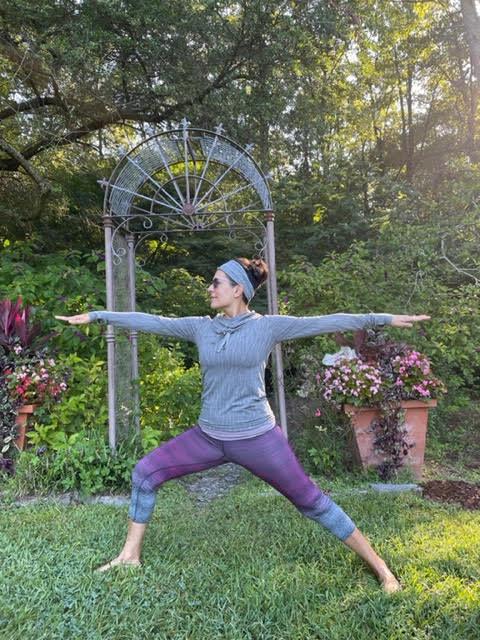
-
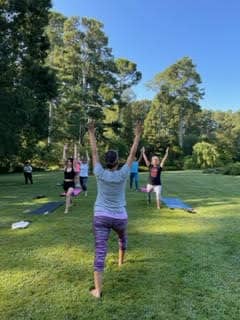
-
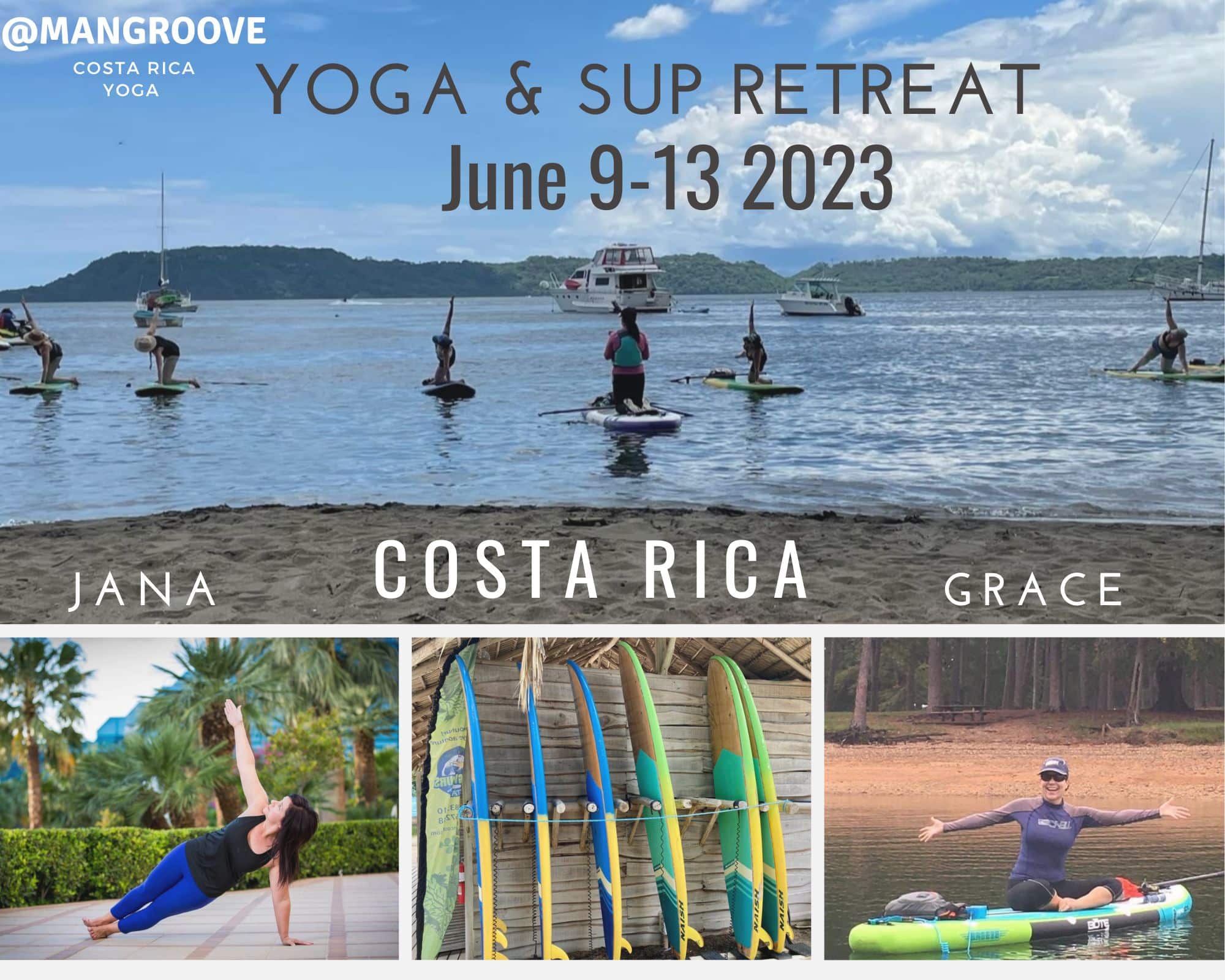
Retreat with Grace Stephen and Jana Rife
Reader Note: Thanks for taking your valuable time to read this long-form interview. I hope these stories help you discover inspiration and advice that improves your life in a meaningful way.
Interested in receiving a periodic newsletter with curated, quality content (edited, long-form interviews) from successful fitness professionals around the world? If so, I’d love it if you would sign up here.
Are you a professional in the fitness industry with over five years teaching experience? Would you like to learn more how my retreat leader matching and logistics services can help propel your business to the next level? If so, please take 5 minutes to tell me more about your goals, experience, and areas of expertise here.



